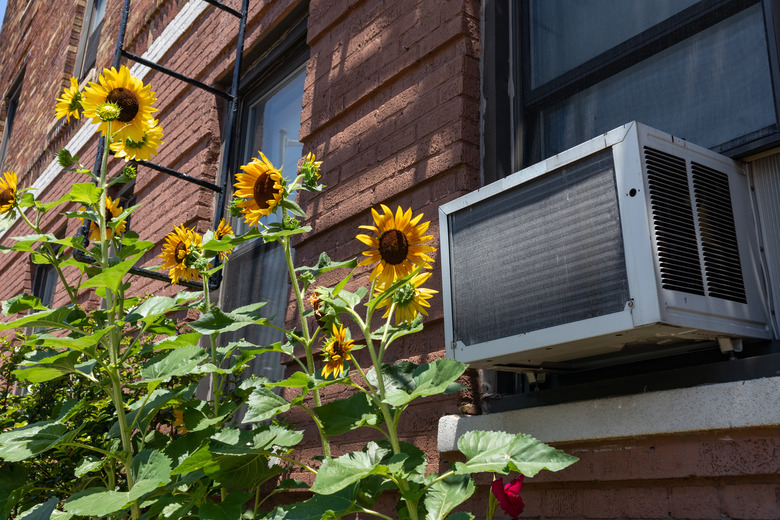How To Measure A Window For An Air Conditioner
Window air conditioners are available in a wide range of sizes and shapes. When you measure a window for an air conditioner, you also need to determine the size of the room, the power source and how to secure the unit in the window. Once you've established the square footage and window size, you can peruse the multitude of air conditioners that will fit in the window and provide sufficient cooling power for the space.
How to Measure a Window
Decide which window will hold the air conditioner, preferably on the north or shady side of the house. Other factors to consider include headroom above sidewalks and the security of the site. You don't want the unit to extend over a sidewalk where a passerby might walk into it. In addition, you may need to take extra measures to secure the unit so no one can access your home by removing the air conditioner and climbing through the window.
Open the window. Using a tape measure, measure the opening side to side and top to bottom. Write down the measurements and measure a second time to be sure you have the correct numbers. Also, look at the type of window and determine whether it is a casement, sliding horizontal, single-hung, double-hung or louvered style.
Determine the Air Conditioner Size
To determine the air conditioner size, measure the square footage of the room. The length multiplied by the width determines the square footage. As an example, a 10 x 12-foot room is 120 square feet.
To determine the BTU (British thermal units) per hour, multiply the square footage of the space by 30 if it is a shady room on the ground floor or by 40 if it is in a kitchen, on an upper floor or on the sunny side of the house. Alternatively, check the manufacturer's specifications for the air conditioner you're considering to ensure that it isn't oversized or undersized for the space.
In addition to the size of the unit, check the outlets. Most homes only have standard 120-volt outlets, and older homes may not have a three-prong outlet. You may need a three-prong extension cord rated for use with an air conditioner. Last, check the ENERGY STAR ratings for the air conditioner to determine the energy use of the unit.
Choose an Air Conditioner
Use the measurements of the window and the size of the room to decide which window air conditioner will best suit your needs. The specifications should give the size of the unit as well as the minimum and maximum measurements of the window opening.
Also, double-check whether the air conditioner is intended for use in a single-hung or double-hung window or a sliding horizontal or casement window. Air conditioners designed for sliding horizontal or casement windows are taller than they are wide, while units designed for single-hung or double-hung windows are shorter and wider.
Install the Air Conditioner
Open the window to the maximum width and remove the window screen. With a helper, lift the air conditioner into the window so the flange on the bottom of the unit fits securely onto the window frame. In some cases, you may need to install a bracket outside the window to hold the unit securely.
Lower the sash or slide the window closed and check the fit of the unit. Air conditioners usually come with accordion side panels to cover gaps. You may need additional weatherstripping and window locks to keep the window secured tightly against the top or sides of the unit.
If you're putting an air conditioner designed for a double-hung window into a sliding horizontal window, you'll have to cover the open space above the unit. An acrylic, plexiglass or plywood panel cut to size can fill the space and help secure the air conditioner in the window. Add weatherstripping and a panel of rigid insulation board to help block drafts, bugs and the sun's rays.
